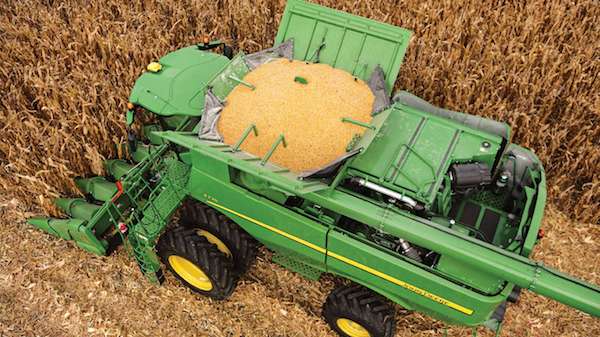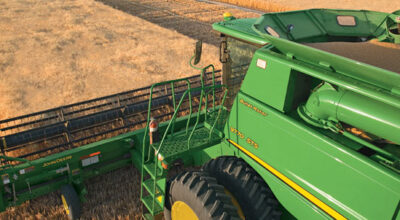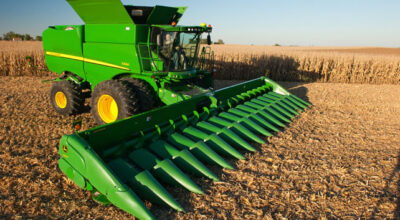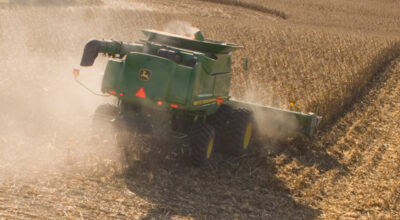With the John Deere S-Series combine, anything is possible in terms of taking care of corn harvesting out in the field. The combine is specifically designed to optimize and automate the harvesting operation, making it easy for producers to take care of their crop efficiently each season.

Take a look at the videos below to see how the John Deere S-Series combine can help this season and beyond.
Harvesting Corn Part 1
Before beginning any procedure with the machine, it is important to take a look at the safety instructions and familiarize yourself with the safety decals on the John Deere S-Series Combine; look for worn parts or sharp edges on augers and threshing elements, as well. The corn head row unit deck plates need to be set no more than 1/8 of an inch wider than the diameter of the typical cob, and no less than 1/8 inch less than the diameter of the average stalk in the field being harvested. If the deck plate spacing is too wide, you may cause damage to the kernels of the cob. Corn head gathering speed is correctly matched to ground speed when the stalks are smoothly pulled straight down through the stalk rolls and gently snapped off without damage.
Harvesting Corn Part 2
In order to optimize performance when harvesting, it is important to verify that the feederhouse chain and belt tensions are correct; the chain on the small 26-to-32 tooth sprocket is used for small grain harvesting. When adjusting the combine, a common error made by operators is underestimating the effect of the feederhouse drum. The height position of the feed drum determines how the crop is fed to the rotor and concave area. For corn, the front drum should be in the up position.
Harvesting Corn Part 3
When fine-tuning your combine, move the straw chopper to the windrow position in order to get an accurate indication of what is coming off the back end of the rotor. Remove concave inserts and separator grate covers before installing separator grate spacers. If the rotor speed and concave spacing are correct, the operator should find what is typically referred to as busted cob, as well as some occasional hole cobs with no kernels attached.
Harvesting Corn Part 4
When adjusting the cleaning system of a John Deere S-Series combine, operators must first ensure that settings and configurations are correct. In order to obtain the highest cleaning and grain capturing capacity, it is important to check if the chaffer and sieves are in a deep tooth configuration. Set the rear of the dual zone chaffer to 5 millimeters for level terrain or 10 millimeters for rolling terrain to help reduce the potential for heavy tailings. Chain tension should be loose enough to move the chain a little side-to-side, but tight enough so you can’t pull it away from the sprocket.
If you have any questions about the John Deere S-Series combine, you can contact your local John Deere dealer.
If you enjoyed this post or want to read others, feel free to connect with us on Facebook, Pinterest, or Twitter!


